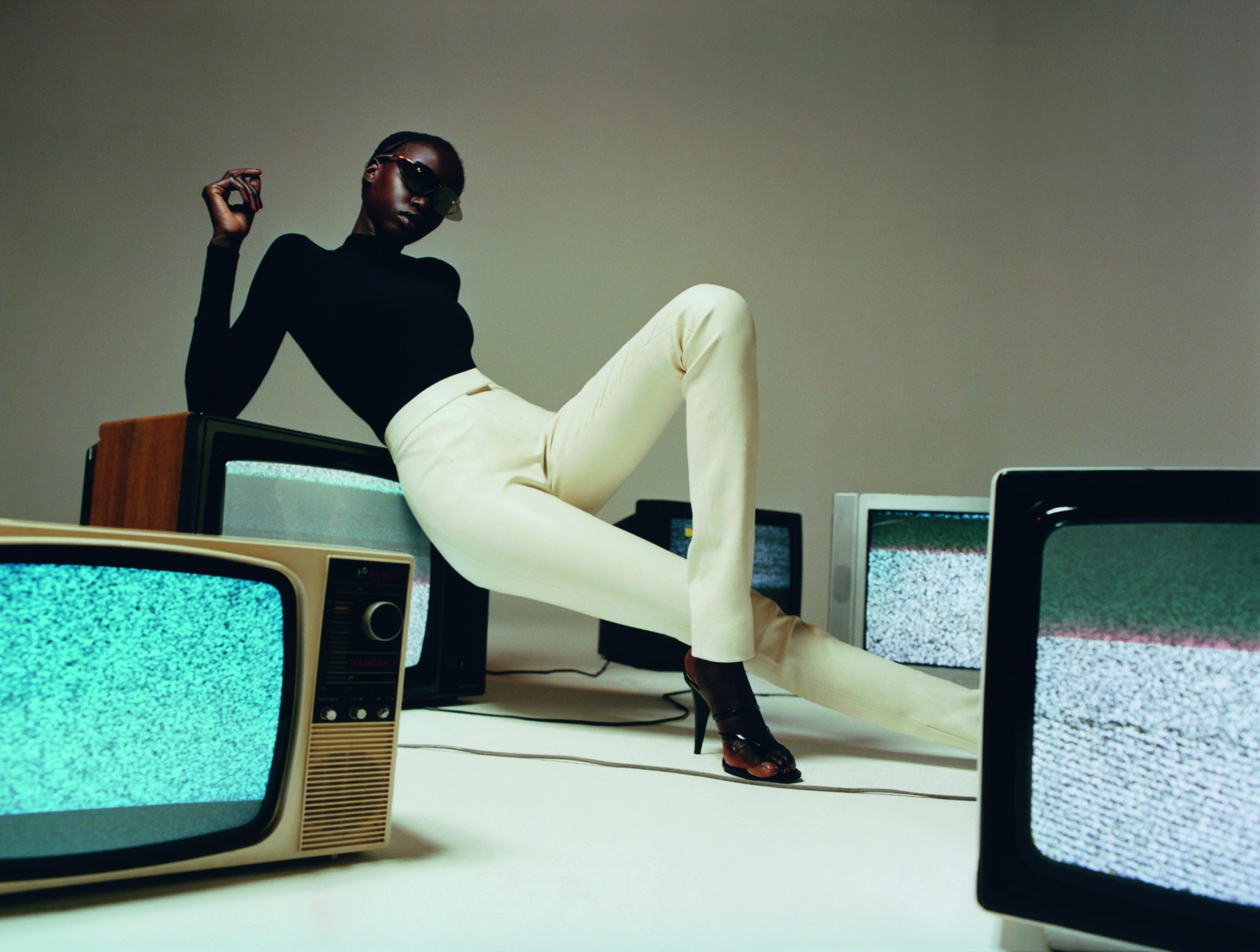Rihanna’s story originally appeared in i-D’s The Post Truth Truth Issue, no. 357, Autumn 2019. Order your copy here.
By now you will have heard. You will have seen it all over Instagram, splashed across the papers, hashtagged on Twitter – you may have even have bought it and taken it home in one of those big blue bags, the colour of the Caribbean Sea surrounding Barbados.
Fenty is here. The revolution has happened. Rihanna is the first black woman to helm a major LVMH-backed fashion house and fashion will never be the same again. What does the first major fashion house led by a black woman look like? It’s unapologetically sexy, for a start. “The most important message is that this a line designed by a woman for women,” Rihanna says. “It’s for women to feel their sexiest, their boldest, their most feminine, their most masculine, their most, period.”
There aren’t many people like Robyn Rihanna Fenty. Between balancing a music career (a ninth album is on the way), running a juggernaut beauty line, a size and gender-inclusive lingerie label, appearing in nine blockbuster movies, managing her charity, the Clara Lionel Foundation, and finding time to have a personal life, this woman is busy. Don’t be mistaken by the Instagrams of @badgalriri lounging by a pool in Murakami-Vuitton furs or stepping out for dinner in diamonds and leather. Rihanna is no lady of leisure. There’s a reason she sang all about “work, work, work…”
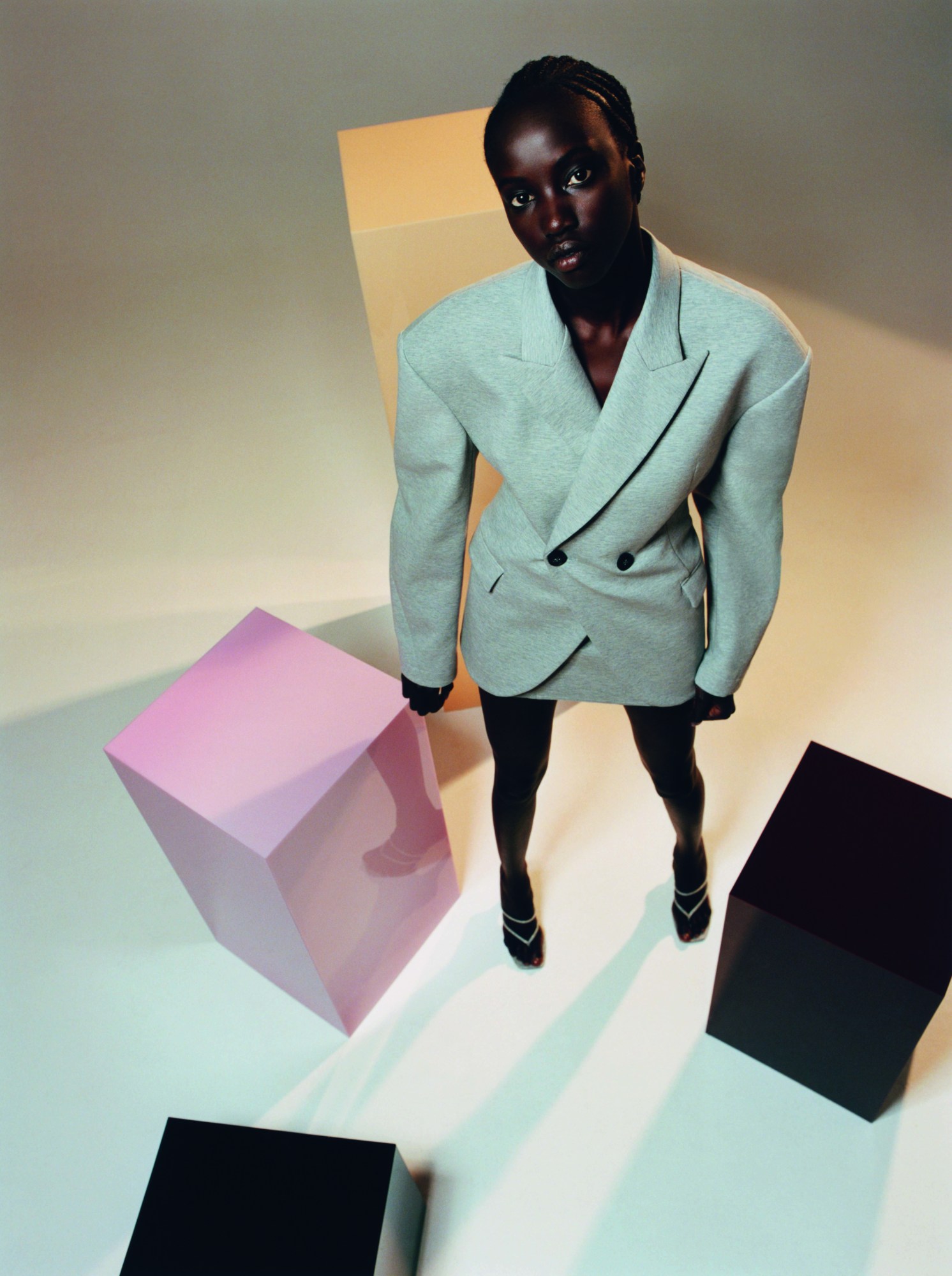
Sometimes, the narrative has framed Rihanna as having been “given” a fashion house by LVMH, though that betrays the immense cultural and financial power that she brings to the table. For LVMH, this is a coup – not the other way round – because it has tapped the world’s biggest fashion icon to start their first “maison” since Christian Lacroix in 1987. Fenty now glitters within the pantheon, alongside Dior, Fendi, Celine and Louis Vuitton. It isn’t your run-of-the-mill celebrity line, nor is it simply an endorsement. It is its own entity, which says a lot about the shift in fashion from star designers to actual stars.
Before, classically-trained designers were fashion’s rock stars and the celebrities were ambassadors, available for a front-row seat or to star in a campaign, happy to endorse a product for the paparazzi. Now they’re taking ownership and creating the product themselves. It’s a recent phenomenon, especially with musicians. Honey Dijon is going into business with Comme des Garçons; Beyoncé with Adidas; Kanye West’s Yeezy empire is valued at $1.5 billion.
Yet none have come as far as Rihanna, who follows in the footsteps of her hip-hop and RnB forebears, but has upped the ante. She really, really loves fashion and beauty. She gets it, she’s unafraid of it. Her picture is plastered over Afro-Caribbean hair shops all over the world, she’s worn sky-high fashion at every opportunity and her red-carpet looks have quite literally swept the floor.
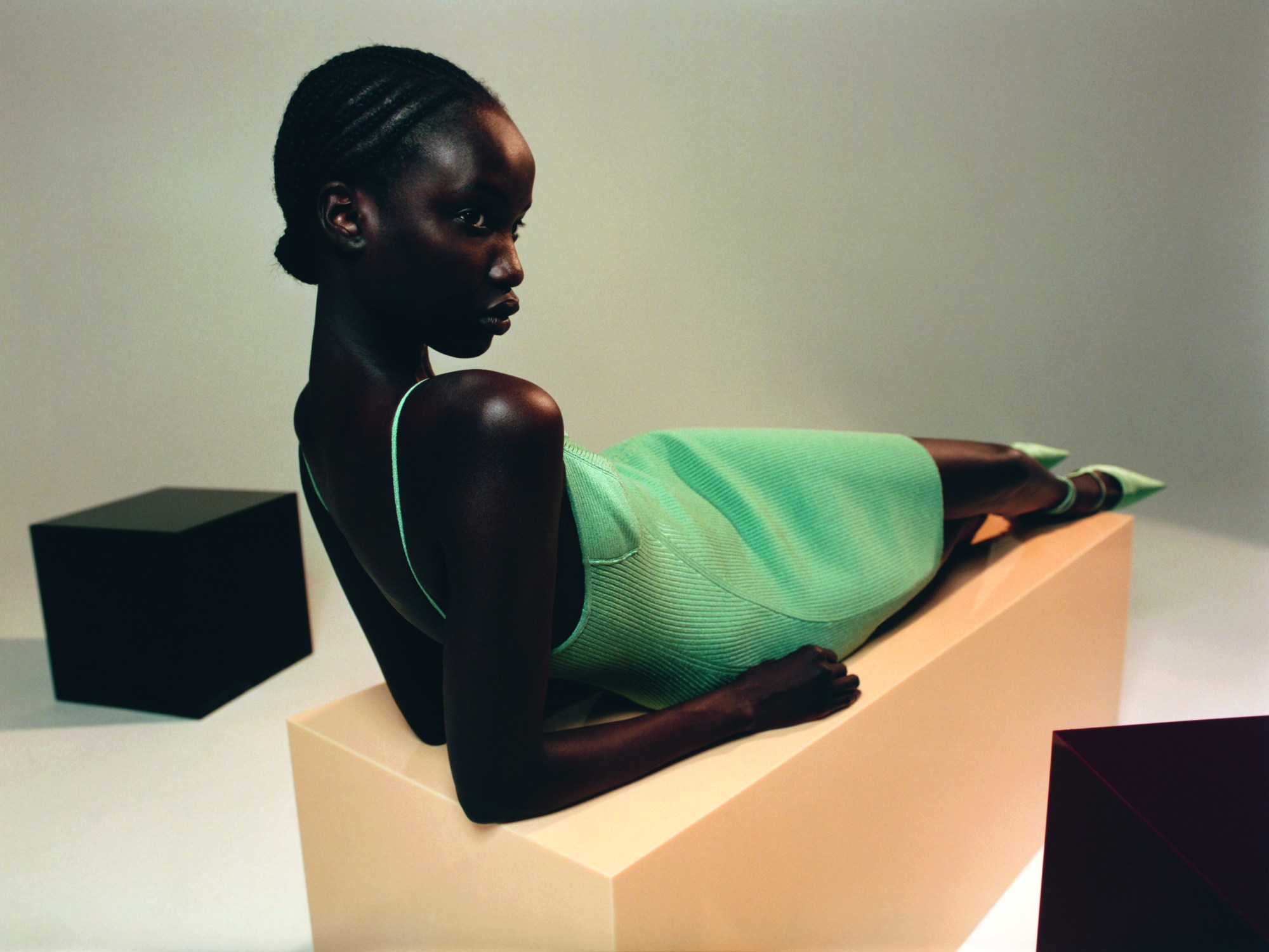
Of course there have been lines by hip-hop’s great and good before — Puff Daddy’s game-changing Sean John line, Jay-Z’s Rocawear collection, Russell Simmons’ Phat Farm and Kimora’s Baby Phat — but these brands were never seen as high fashion, mainly because they were made by people of colour for people of colour. By comparison, Rihanna has earned herself — and as a result, the rest of us — a seat at the fashion establishment table. More than that, she’s turned the tables over.
Fenty isn’t making seasonal collections, it’s releasing direct-to-consumer capsule collections like hit singles. 80 per cent of her business is Fenty.com, while the other 20 is through dedicated pop-ups. It has a flexibility based around Rihanna’s schedule (she lives in London, the company is based in Paris). Fenty is for its customers, not just for the industry.
“There is no six-month wait, you get it when you see it,” she said at the launch. “There’s no tease. You see it, love it, and want it and that’s because I’m like that, I want things right away.”
As so many brands grapple with a new landscape that demands diverse and inclusive representation, Rihanna has made it a pillar of her house. She ensured that Fenty’s gender-fluid sizing goes up to a French 46. “I’m a curvy girl, and if I can’t wear it myself, it’s not going to work,” she says. “I need to see how it looks on my hips, on my thighs, on my stomach – does it look good on me or only on a fit model? It’s important.”
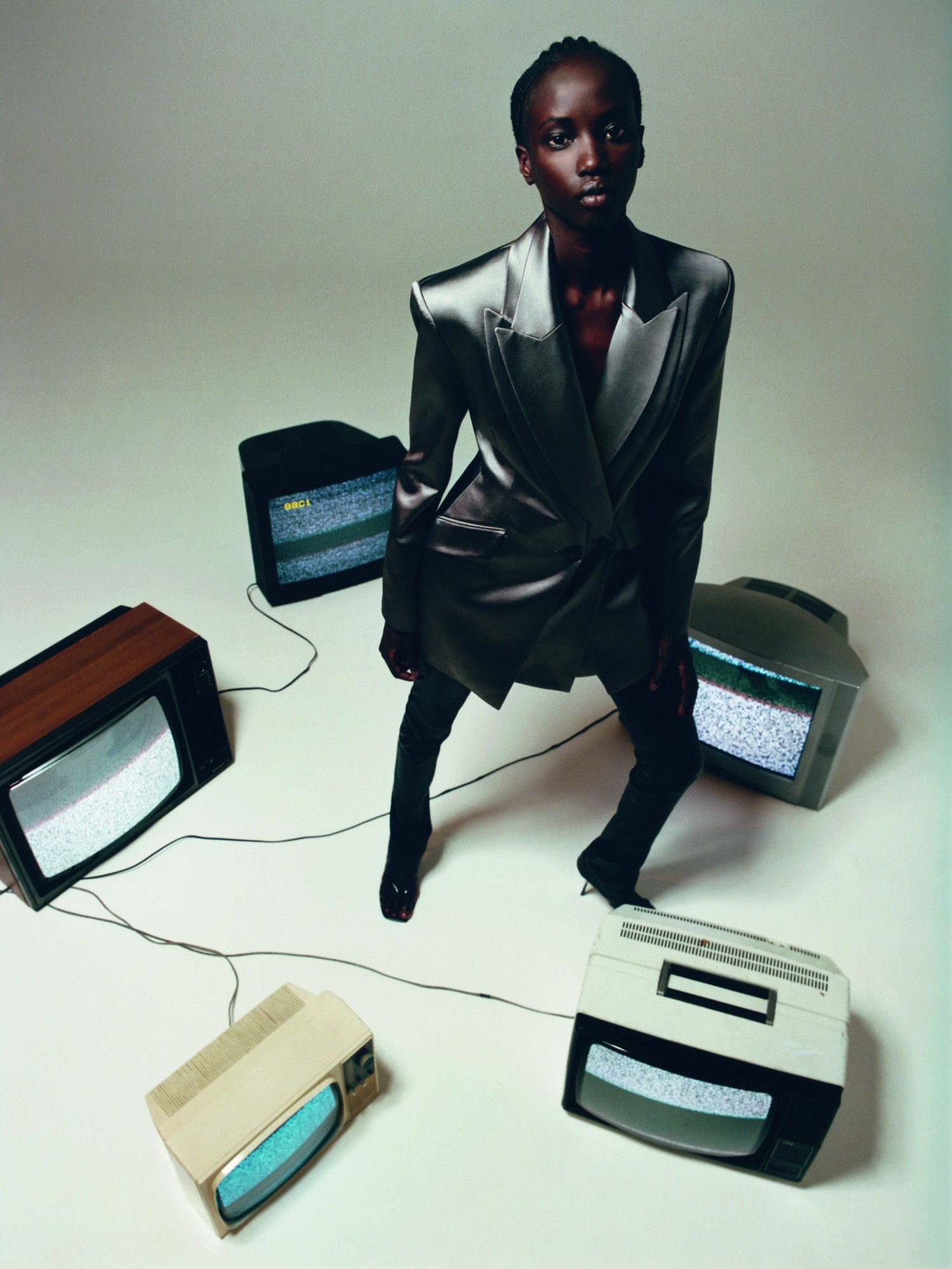
The clothes are made with that in mind. They aren’t overly conceptual, but oversized in the right places, fitted in others. They convey sexiness and youth (Rihanna is only 31, shockingly). There are tie-dye prints in Caribbean combinations of colour, T-shirts that proudly declare the word “Immigrant” alongside postcards from Barbados, and modern takes on the zoot suits beloved by African-American jazz musicians in the 40s. They come cinched at the waist by satin bum bags and with wide, twisted trousers.
There’s a nod to the sinuous sexuality of Zelda Wynn Valdes, the African-American designer who made dresses for the mid- century black glitterati like Josephine Baker, Ella Fitzgerald and Dorothy Dandridge, as well as designing the iconic satin playboy bunny costume. There are riffs on Bob Marley’s denim-on-denim in the 70s, except with top-stitched corsetry that nods to Azzedine Alaïa’s power-femme shapes from the 80s. There are opulent fabrics (Japanese selvedge denim, duchess satin, double-faced jerseys) fit for a modern-day Dominique Deveraux. It’s Rihanna’s vision of fashion for right now, but informed by The Culture’s past.
“When you think about luxury, you think about heritage,” says Jahleel Weaver, who started working with Rihanna as an assistant to her stylist Mel Ottenberg and is now Rihanna’s right hand at Fenty as junior creative director. He points out that that almost every other LVMH fashion house bears the name of someone long dead. “Our first brand campaign was this video that indirectly spoke to Rihanna’s journey as an immigrant: from Africa to Barbados to New York and Paris. That’s the foundation of this house. People forget that Rihanna is an immigrant. She is from none of the places she lives in. She can’t vote anywhere. This is part of who she is.”
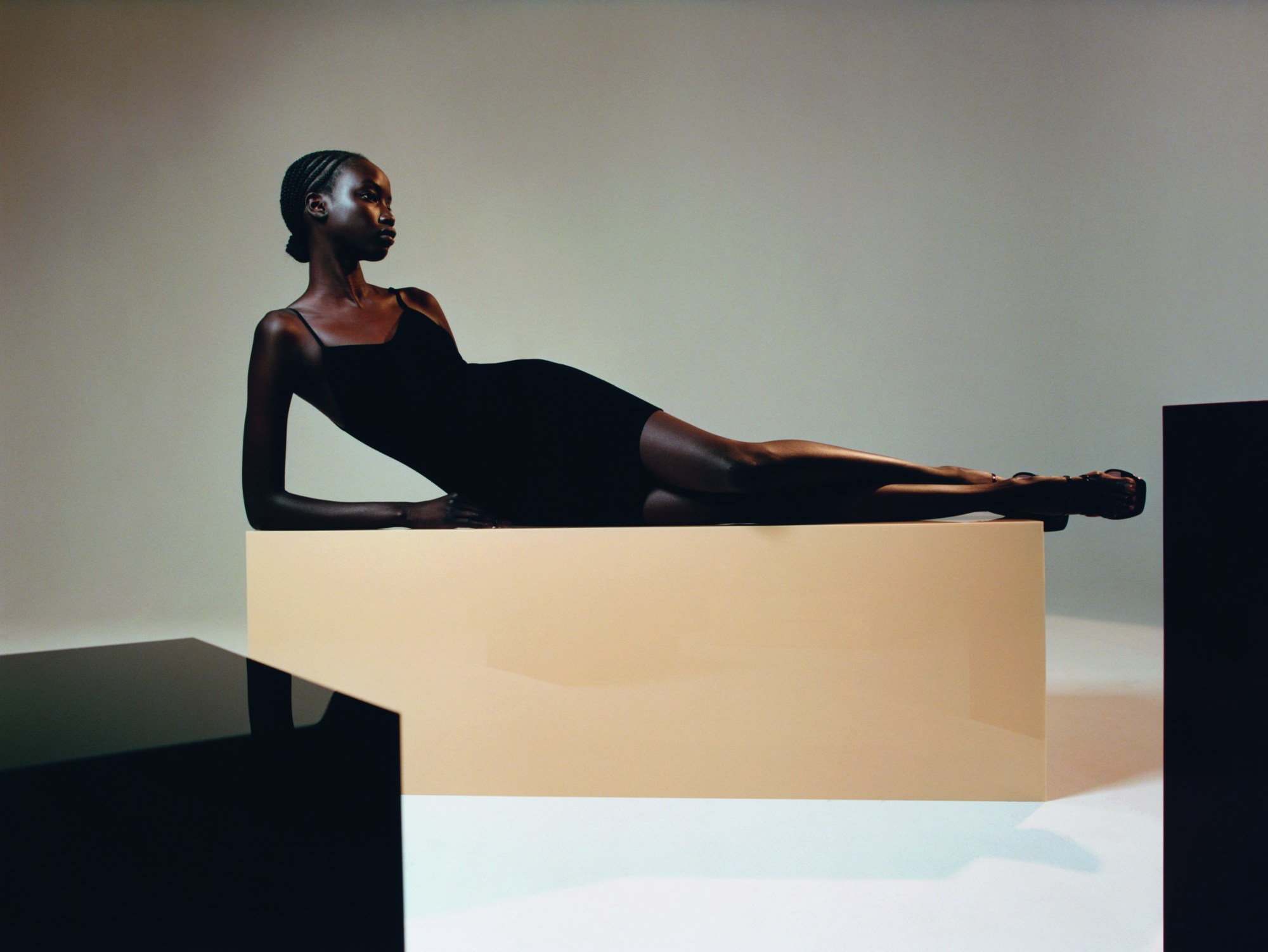
But it’s not just about her. She’s building an empire, and using it as a platform for POC creatives who have long been ignored by the mainstream. When she discovered the work of Brooklyn-born documentary photographer Kwame Brathwaite, for instance, she contacted his family to ask if they could work together. His photographs of the Grandassa Models, one of the first troupes of curvy, natural-haired black models in the United States, who also designed their own African-inspired garments, celebrate the same spirit and black-fashion aesthetic as Fenty. One picture shows them modelling with a sign in the background simply stating, “Buy Black”.
When the Fenty pop-up opened in New York, she enlisted Nigerian photographer Ruth Ossai to capture portraits of the kids who queued in line for hours, for them to take something special home even if they couldn’t afford what was hanging on the rails. “Luxury is now a feeling of community and that’s what this brand is,” Rihanna explains. “It’s no longer about outdoing the person next to you, it’s about being part of a collective spirit.”
That community includes a team of young designers whose work Rihanna discovered as a fanatic customer. “As a young designer, having a moment like that is such an important part of your career trajectory, but with Rihanna, it’s not just been one moment,” says Matthew Adams Dolan, whose Parsons graduate collection was introduced to Rihanna when she appeared on the i-D cover four years ago. After that, she became a devoted customer, helping him establish an independent label (anything Rihanna wears generates desire), before enlisting him to work on the design team of Fenty. “It’s about a relationship. That is one of the things that sets her apart, the idea of family.”
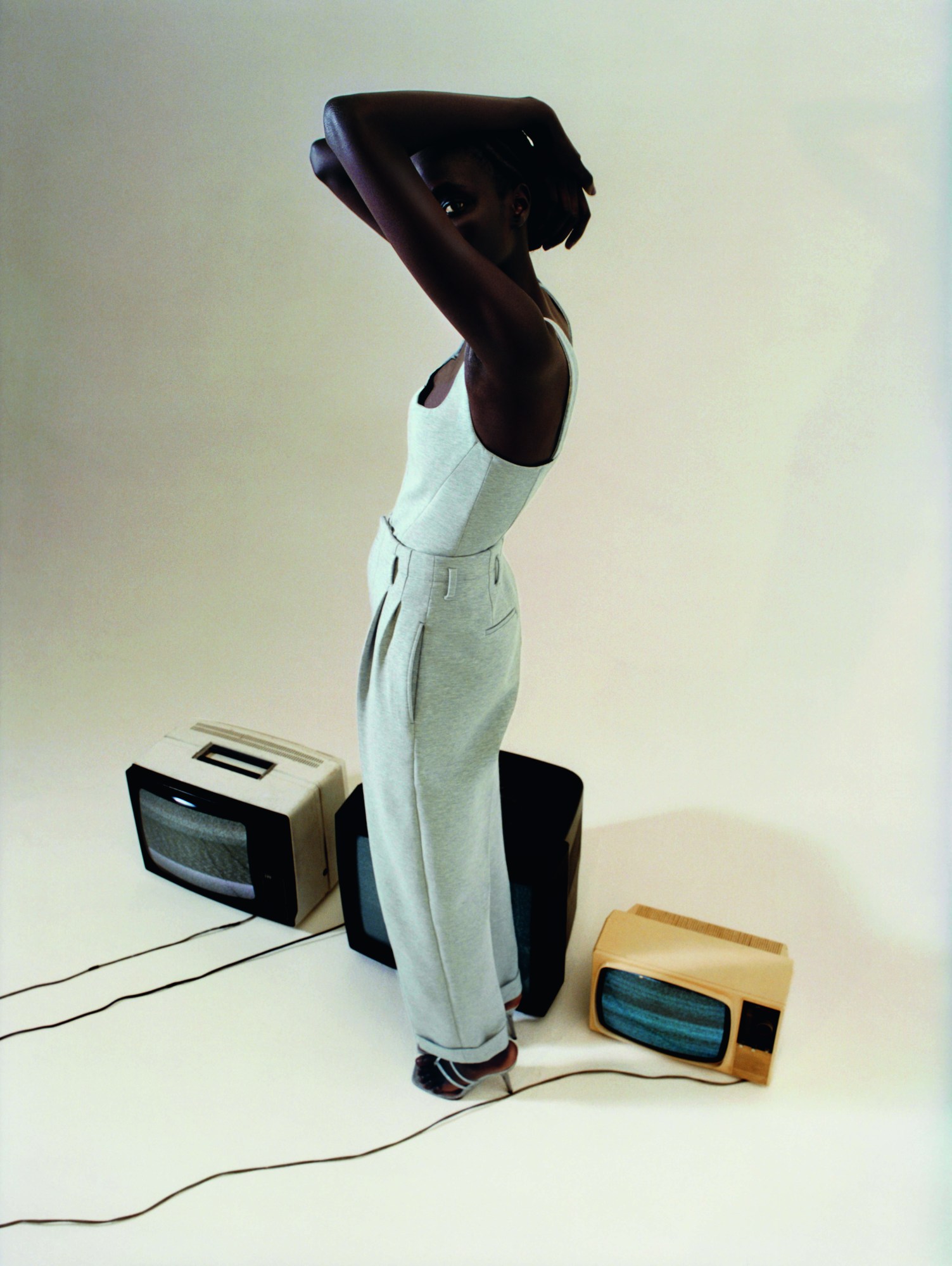
Her emphasis is on family, a core group of close-knit collaborators who she can trust and work seamlessly with. “We can create and understand each other implicitly — sometimes we don’t even have to speak, we just know what feels right,” Rihanna “We love the energy of the youth and that is something we are creatively focused on within each release.”
Conner Ives was still a student at Central Saint Martins when he got the call to join the team, after making Rihanna a custom gown the year before. “It’s a rare opportunity for a designer to be invited to work on a house that is being built from the ground up,” says the 23-year-old. ‘What I realised about her hiring us was that we were becoming the DNA of the brand. That’s a crazy idea to digest.”
“A lot of people my age will do research and it gets passed on to a junior designer and then a senior designer and on and on,” Conner says. “You lose it along the way. What was unique about this experience was that I would be the one to present my ideas directly to her.” Rihanna is involved in every aspect of the business. “She picks every single fabric, she picks every colour variation, every detail,” Jahleel says. Matthew agrees. “A lot of people would think of her being quite hands-off,” he says. “In reality, she is very attached and involved in every single decision.”
In the two years since the deal was made, the handful of LVMH executives sworn to secrecy referred to the project as ‘M’, for “Mademoiselle.” In fashion, that sobriquet is usually reserved for only one, another female designer who led a revolution: Coco Chanel. A century later, Fenty may just be the modern heir to that rarefied halo of history-making fashion legend, a style icon and tycoon. That’s no mean feat. Yet she’s already almost there – and it’s only just the start.
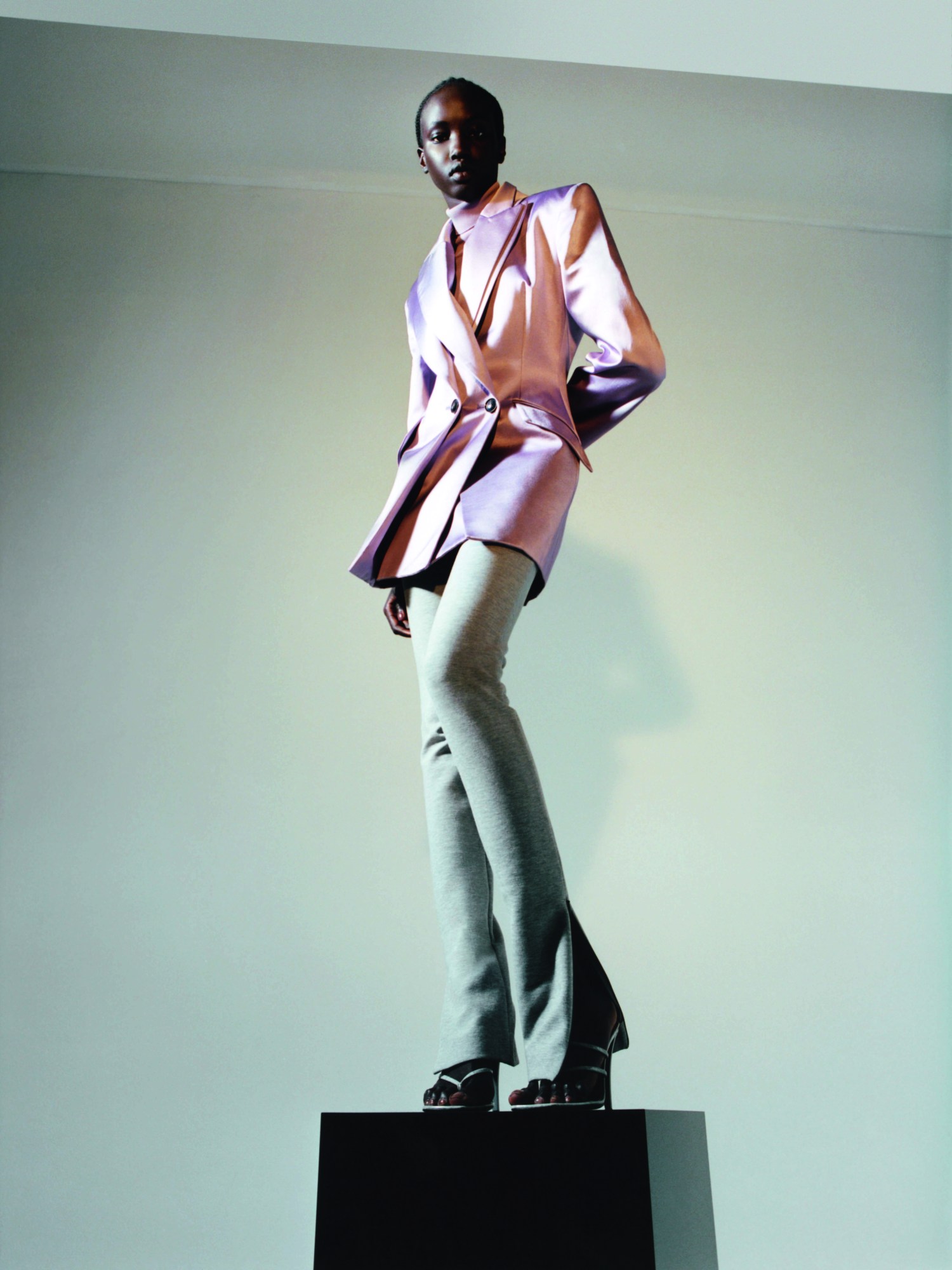
Credits
Photography Hanna Moon
Styling Julia Sarr-Jamois
Hair Soichi Inagaki at Art Partner using Leonor Greyl
Make-up Petros Petrohilos at Streeters using Noir et Blanc de CHANEL and CHANEL Sublimage Eau Micellaire
Set design Suzanne Beirne at D+V Management
Photography assistance Matt Kelly and Alberto Gualtieri
Styling assistance Chelsey Clarke
Hair assistance Hiroki Kojima
Make-up assistance Kimie Yashiro
Set design assistance Joe Winter
Casting director Samuel Ellis Scheinmann for DMCASTING
Model Anok Yai at Next.
